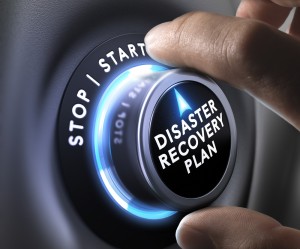 Business owners know there are a number of threats to business continuity. Next to employees, your IT systems and their data may be your most valuable assets. Your business may fall prey to Cyber attack or Data breach. Other factors, including adverse weather, fire, or interruption to utility supply, may also cause business disruption. Can your company recover from a catastrophic data loss? Use this Business Continuity Essentials guide to reduce the risk of downtime:
Business owners know there are a number of threats to business continuity. Next to employees, your IT systems and their data may be your most valuable assets. Your business may fall prey to Cyber attack or Data breach. Other factors, including adverse weather, fire, or interruption to utility supply, may also cause business disruption. Can your company recover from a catastrophic data loss? Use this Business Continuity Essentials guide to reduce the risk of downtime:
Business Continuity: Understanding Cost of Downtime
How much data do you need to recover to bring your business back from a disaster? Not all data may be essential immediately. However, some systems–including email–support other mission-critical systems and processes within your company. It is also important to know how long it will take to recover your data. Factor in your employees’ wages, plus overhead and potential loss of revenue, to get a sense of the overall risk of not having a Business Continuity and Disaster Recovery plan.
Having a Business Continuity Plan May Avoid Violation of Industry Regulations
Depending on your industry, backup and disaster recovery might be the law. Sarbanes-Oxley (SOX) makes business continuity and disaster recovery an imperative. Failure to comply could mean fines and even jail time. Other industries, including health services, must comply with the Health Insurance Portability and Accountability Act (HIPAA), which requires backing up data and making sure it is consistently available, even in a disaster. Understand regulatory requirements placed on your business, to avoid unnecessary consequences of a business interruption and data loss.
Data Protection with Belts and Suspenders
Relying on a local backup is not enough. The risk to your business resulting from a data loss is too high to rely on one backup method alone. Complement your local backup with Cloud Backup to ensure rapid recovery. Offsite archives of tape backups may not recover fast enough to avoid business interruption. It is also important to ensure your network supports a timely backup from a local source as well as from a Cloud backup and recovery system.
Test Your Backup to Ensure Rapid Recovery
Backup is all about recovery. Verifying your backup in a timely manner, and ensuring it actually works, is a critical step in your business continuity and disaster recovery plan. You should verify your backup periodically and check to make sure all data needed is included. By testing the recovery, you can identify any corrupted data along with network bottlenecks to restore your business to full operation.
If you have any questions about your business continuity and disaster recovery plan, contact your trusted technology advisor. If you are uncertain about your cost of downtime, compliance with industry regulations, or your company’s ability to recovery from a disaster, do not delay but seek guidance today.
